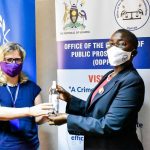The government has pledged to address the increasing cases of drowning in major water bodies across the country.
Drowning remains a significant but often overlooked public health concern. According to the World Health Organization (WHO), it is the third leading cause of unintentional injury-related deaths globally, accounting for approximately 370,000 fatalities annually. Nearly 45% of these victims are under the age of 20.
In Uganda, where fishing is a primary source of livelihood for lakeside communities, drowning poses a major risk. Despite working in hazardous water environments, more than 33% of Ugandan fishermen cannot swim, making them particularly vulnerable. The country records some of the highest drowning rates in the region, with over 1,435 fatal and non-fatal cases documented between January 2016 and June 2018 across more than 60 districts. Nearly 90% of the victims were male.
Speaking at the premiere of Unpredictable Waters a documentary highlighting the dangers faced by lakeside communities Eng. Tumusiime reaffirmed the government’s commitment to drowning prevention. He emphasized that this effort is being reinforced through policy frameworks, including the draft National Water Safety Strategic Plan (2023-2028).
“Uganda is blessed with abundant water bodies, but they come with challenges, including drowning. Children and young people are the most affected. In 2023 alone, 138 drowning fatalities were reported, highlighting the urgent need for action,” he stated. “This documentary sheds light on the issue and offers practical solutions to save lives.”
The event also showcased the Drowning Prevention Project, an initiative by Reach A Hand Uganda (RAHU) launched last year. The project aims to enhance drowning prevention efforts and promote water safety in lakeside districts such as Mayuge, Rakai, and Masaka.
RAHU’s Acting Country Director, Benson Muhindo, emphasized the need to integrate swimming lessons into school curricula and establish community swimming pools to equip children with essential life-saving skills.
“We have identified three locations in affected districts where swimming pools will be built to teach basic water safety and survival skills,” he announced.
Joe Kigozi, a RAHU Board Member representing Board Director Edna Mbabazi, stressed that drowning prevention is not just a safety measure but a critical public health priority, particularly for Uganda’s predominantly young population. He highlighted that the documentary serves as an advocacy tool for stronger interventions.
The premiere also featured a panel discussion where experts underscored the need for coordinated strategies to reduce drowning risks.
Commissioner Sowed Ssewagudde from the Department of International & Transboundary Water Affairs at the Ministry of Water & Environment revealed that Shs 14 billion is still required to strengthen interventions at various water bodies and communities.
“Out of the Shs 25 billion needed, Shs 11 billion has already been sourced through ongoing activities. The remaining Shs 14 billion is required for implementing key interventions such as early warning systems, teaching schoolchildren to swim, and purchasing water ambulances to improve rescue operations,” he said.
Govt Commits to Tackling Rising Cases of Drowning







